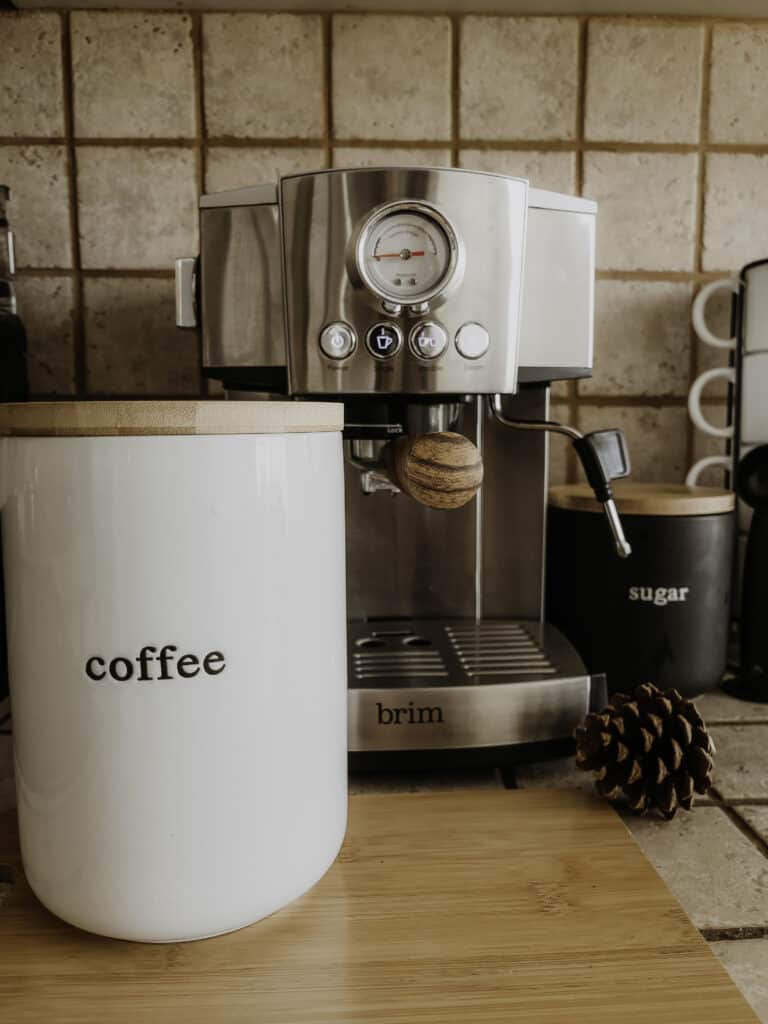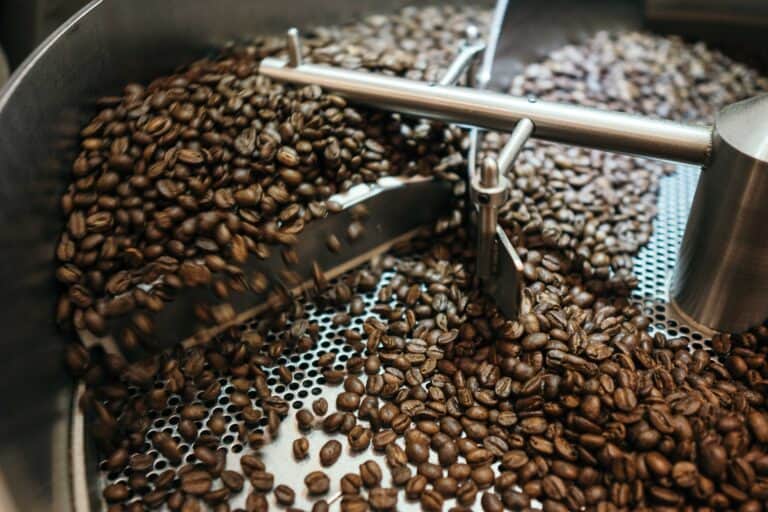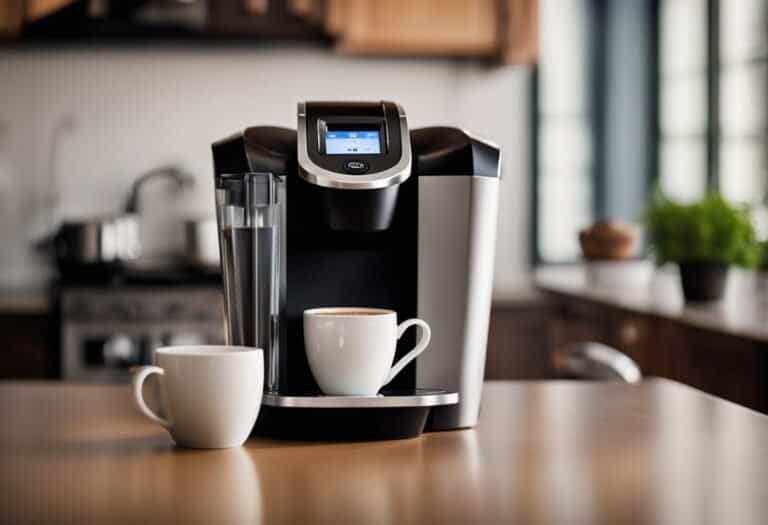How to Backflush Espresso Machine: A Step-by-Step Guide

As coffee enthusiasts, we know that a good espresso shot depends on many factors, including the cleanliness of our espresso machine. Backflushing is an essential part of maintaining our espresso machines, and it should be done regularly to keep our machines in top condition. Backflushing helps to remove the coffee oils and residues that build up over time, which can affect the taste of our espresso shots and even damage our machines.
Backflushing an espresso machine is a simple process that involves using a backflush disc or a blind basket, along with a cleaning agent, to clean the group head of our machine. The backflush disc or blind basket is inserted into the portafilter, and the cleaning agent is added to the basket. The portafilter is then locked into the group head, and the machine is activated to create pressure, which pushes the cleaning solution through the group head and back into the drip tray. This process should be repeated several times to ensure that the group head is thoroughly cleaned.
It is important to note that not all espresso machines are designed for backflushing, and some machines require specific cleaning agents. Therefore, it is essential to check the manufacturer’s instructions before attempting to backflush an espresso machine. In this article, we will provide you with a step-by-step guide on how to backflush your espresso machine and offer some tips to help you keep your machine in top condition.

Why Backflushing is Important
Backflushing is an essential part of routine espresso machine maintenance. It helps to remove residue and coffee oils that accumulate in the group head and three-way valve, which can cause bitter and acrid tasting espresso. By using a backflush disc and pump, we can flush out these residues and oils, keeping our machine in good working order.
Benefits of Backflushing
Backflushing has several benefits, including:
- Preventing the buildup of rancid coffee oils that can make espresso taste bitter and acrid
- Prolonging the life of the machine by keeping it clean and free of residue
- Ensuring consistent and high-quality espresso shots
- Reducing the risk of damage to the machine’s internal components
Regular backflushing can also help to maintain the foam and crema of our espresso shots, as it ensures that the machine is free from any obstructions that could impact the quality of the shot. It’s important to note that backflushing should be done in conjunction with proper bean storage, grind, and dose, as these factors can also impact the quality of our espresso.
Whether we have a Slayer, E61 group, or any other type of espresso machine, backflushing should be a regular part of our maintenance routine. By keeping our machines clean and free of rancid coffee oils, we can ensure that we’re getting the most out of our equipment and producing high-quality espresso shots every time.
How to Backflush an Espresso Machine
What You Need
Before we get started, let’s make sure we have everything we need to backflush our espresso machine. Here’s a list of items you’ll need:
- Blind filter
- Backflush detergent or cleaning powder
- Portafilter
- Tamper
Step-by-Step Instructions
Now that we have everything we need, let’s follow these simple steps to backflush our espresso machine:
- Remove the portafilter basket and insert the blind filter into the portafilter.
- Add up to 1/2 teaspoon of backflush detergent or cleaning powder into the blind basket.
- Insert the portafilter into the brew group and start the pump.
- Allow the pump to run for 10 seconds and then turn it off.
- Wait 10 seconds and then repeat steps 3 and 4 four more times.
- Remove the portafilter from the group head and rinse it with water.
- Insert the portafilter into the group head and run the pump for 10 seconds to rinse out any remaining detergent or cleaning powder.
- Remove the portafilter and rinse it with water again.
Troubleshooting Tips
If you’re experiencing any issues while backflushing your espresso machine, here are some troubleshooting tips to help you out:
- If the pump isn’t working, make sure the machine is turned on and the water tank is full.
- If the pump is working but there’s no flow, check the shower screen and clean it if necessary.
- If the shot tastes bitter or has no crema, adjust your grind or dose accordingly.
- If there’s foam coming out of the three-way valve, your backflush disc may be worn out and need to be replaced.
- If you notice any rancid coffee oils or residue on the gasket or shower screen, it’s time for a deeper clean or maintenance.
Remember, backflushing your espresso machine is an important part of regular maintenance to keep your machine running smoothly and ensure the best possible taste for your shots. By following these simple steps and troubleshooting tips, you’ll be able to backflush your machine with ease.
Cleaning and Maintenance
Keeping your espresso machine clean is essential to ensure its longevity and performance. In this section, we’ll cover how often you should backflush and some other maintenance tips to keep your machine in top shape.
How Often to Backflush
We recommend backflushing your espresso machine once a week. This will help remove any buildup of coffee oils and prevent clogs in the machine. Use a cleaning detergent or espresso machine cleaner specifically designed for backflushing. Follow the instructions on the package for the correct amount of cleaner to use.
If you have an E61 machine, you can also use a cleaning tablet in addition to backflushing. Place the tablet in the group head and run hot water through it. This will help remove any buildup in the group head and keep it clean.
Other Maintenance Tips
In addition to backflushing, there are a few other maintenance tips you can follow to keep your espresso machine running smoothly:
- Regularly clean the steam wand with a damp cloth to prevent milk buildup.
- Descale your machine every three to six months to remove mineral buildup.
- Replace the group gasket every six months to a year to prevent leaks.
- Regularly clean the portafilter and baskets with warm water and a brush to prevent coffee buildup.
By following these maintenance tips and backflushing your machine regularly, you can ensure that your espresso machine will continue to produce high-quality espresso for years to come.
RECOMMENDED READS
Top Rated Espresso Machines: Your Guide to the Best Options
How to Make Coffee with an Espresso Machine: A Beginner’s Guide
How Much Espresso is in a Shot? A Comprehensive Guide





